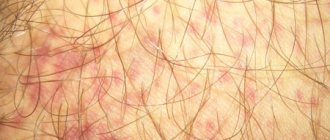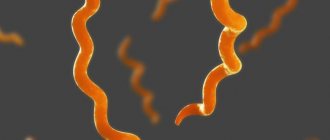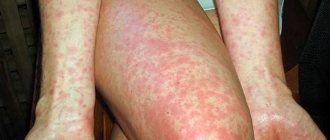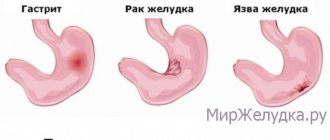Despite the fact that many claim that natural cow's milk is one of the healthiest products, it can still provoke allergic reactions in children and adults. This type of allergy is caused by the presence of casein protein in cow's milk. This protein has a large molecular weight. As a result, it is perceived by the body of children and adults as foreign. Children most often suffer, since their immune system is only at the stage of formation.
This reaction is provoked by the use of cow's milk at too early an age (instead of breast milk) or infant formula. And the child enters the so-called new adult life with allergies. Medicine is developing rapidly and doctors strongly do not recommend using it in children's diets at all. This type of allergy manifests its symptoms not only to milk in its pure form, but also to condensed milk.
Why does milk allergy occur?
Most often, allergic reactions appear from childhood. It is worth remembering that it is better not to give cow's milk to infants, replacing it with mother's milk. In addition, there is an opinion that putting a baby to the breast too late can also cause the disease.
Risk factors for allergies to dairy products include:
- heredity, if one of your close relatives suffers from this disease, then the chance of getting sick increases;
- excessive consumption of milk by the mother during breastfeeding;
- characteristics of the body, in particular the immune system; This refers to increased sensitivity to dietary supplements;
- diseases of the gastrointestinal tract and liver; these organs are an important link in the process of digesting dairy products and breaking down protein;
- negative influences of the external environment, meaning stress, polluted environment, unhealthy diet.
Allergy to protein
Contents
Protein is a multifunctional element necessary for the health of the human body. A person's diet should consist of 15% protein foods. However, recently, protein allergies have become a real scourge. Protein allergens, when entering the body, provoke allergic reactions of various types - from a simple skin rash to a deterioration in general well-being.
A protein allergy is a reaction of the immune system to the invasion of the body by a foreign protein that is similar in its molecular composition.
Reasons why the body does not accept milk
It is worth noting that milk of animal origin can be rejected by humans due to two factors. The first is lactase deficiency. A certain proportion of the population suffers from this disease, namely complete or partial intolerance to milk sugar. If the body does not have a special enzyme, lactase, produced in the intestines, then the immune system gives an unfavorable reaction when milk enters.
Lactase deficiency is one of the causes of allergies in adults. Sometimes a rational step would be to replace milk with fermented milk products: sour cream, kefir, etc. However, these products should be consumed with caution, without getting too carried away.
Allergy to cow's milk protein (protein) is the second cause of the disease. Animal products contain about 25 different types of protein. In most cases, allergies occur to several types at once. There are situations when the disease is expressed in contact form, that is, when milk gets on the skin, blisters or redness appear.
What in milk provokes an allergic reaction?
Cow's milk is considered a strong allergen. It contains about 40 types of proteins, 7 of which are recognized as strong allergens. The milk of other animals is somewhat different in its composition and size of protein molecules from cow's.
For example, goat milk has a finer composition and is more easily absorbed by the body of children. Camel milk is devoid of lactoglobulin, which makes it a hypoallergenic product.
All cow's milk proteins can be divided into 2 large groups:
- casein (80%).
- whey (20%).
Casein is less digestible than whey protein. Among whey products, the championship in intolerance in children is given to beta lactoglobulin and alpha lactalbumin. Not only cow's milk, but also its processed products can cause allergies.
Cow's milk protein intolerance can develop into cross-reactivity in the body.
This is when an allergic reaction in children develops not only to whole milk, but also to products containing closely related allergens - beef, cheeses, cottage cheese, fermented milk products.
Article on the topic: What is an immunogram? Immunogram indicators and interpretation of results
Allergy to milk, causes and methods of development
Symptoms of milk allergy in adults
As already noted, this disease can manifest itself with various signs. The only thing that remains common is that their occurrence is caused by the consumption of dairy products. The severity of symptoms depends on many factors, including the body's sensitivity, level of immunity, etc.
The main symptoms of milk allergy in adults include:
- diarrhea, vomiting, abdominal pain; these symptoms are rare in adults, but do occur;
- nasal congestion, swelling of the mucous membrane, rhinitis;
- general symptoms including dizziness, fainting, rapid breathing; Sometimes the temperature rises due to allergies in adults;
- the appearance of redness and blisters on the skin, accompanied by itching; It is worth noting that opening them is strictly prohibited;
- Quincke's edema - this symptom is considered a manifestation of the most severe form of allergy; if treatment is not started promptly, it can lead to death; appears as a result of fluid accumulation in the facial area; this leads to swelling of the nose, neck, and chest.
It must be said that Quincke's edema is also accompanied by stuffy ears, cough and hoarseness.
Features of manifestation
The clinical picture of an allergic reaction to milk in adults depends on several factors:
- the degree of sensitization of the body to a specific allergen - measures of the sensitivity of the immune system to milk protein;
- allergen dose - the amount of milk that leads to the first signs of allergy;
- sensitivity of peripheral tissues to biologically active substances released or produced under the influence of an allergen - the strength of the body’s response to signals sent by the immune system;
- state of immunity - the general ability of the immune system to resist the influence of harmful factors.
In the case of milk allergy, the difficulty in identifying symptoms is that it is impossible to associate a specific type of milk protein with a specific reaction in the body. In addition, milk is found not only in its pure form, but is also industrially processed into various products and food additives, and therefore can be hidden in many food products.
Also, in addition to food allergies, there are 2 more types of milk allergies with specific symptoms:
- occupational, which usually occurs when inhaled milk protein powder and causes the development of bronchial asthma;
- contact – when the skin comes into contact with milk, when swelling, itching, redness, and peeling appear locally, which can be easily seen in the photo of a patient with such a pathology.
The immune response to milk proteins, which are perceived by the body as foreign elements, can take place at the level of various systems and manifest itself with the following symptoms:
- from the gastrointestinal tract - bloating, flatulence, cramps, pain, vomiting, constipation or diarrhea;
- skin problems - the appearance of rashes, itching, swelling, redness of the skin;
- from the respiratory system - swelling of the nasal mucosa, nasopharynx, rhinitis, increased mucus secretion, sneezing, shortness of breath;
- Quincke's edema (angioedema) - rapid accumulation of fluid in loose connective tissues, mainly on the face, pharynx and larynx.
- vegetative (general) reactions – drop in blood pressure, dizziness, loss of coordination, loss of consciousness, rapid breathing, palpitations..
Important! In severe cases, milk allergy can be accompanied by severe swelling of the larynx, suffocation, and pressure surges, which are signs of anaphylactic shock. In such a condition, urgent resuscitation measures are necessary.
Since these signs are characteristic of any type of food allergy, it can be quite difficult to establish a connection specifically with the consumption of milk protein. To do this, you need to carefully monitor your health after taking certain products, and also take into account the characteristics of the manifestation of symptoms.
Will replacing cow's milk with goat's milk help?
A person consumes dairy products from the following animals: cow, goat, camel, sheep, horse. All species contain approximately similar proteins. Therefore, if there is a problem of intolerance to cow's milk, then replacing it with goat's milk or some other milk is unlikely to help.
Scientists have discovered an interesting fact: sometimes adults and children develop an allergy exclusively to powdered milk, while they can consume whole milk without problems. The fact is that in this case, intolerance is not expressed due to milk protein. The activators of the disease are changes that have occurred in proteins and fats.
Can a mother be allergic to milk? The answer here is clearly negative. Although sometimes there are cases when the mother herself consumes a large amount of milk during feeding. Then the child may have a reaction to the proteins that enter his body.
Causes
There are about 20 types of proteins in cow's milk, and the main part of them are caseins. As a rule, infants are allergic to several types of proteins at once and cannot be removed by boiling or other processing methods. There are several types of reasons when an allergy may appear to such complementary foods:
- Heredity . If the baby has a genetic predisposition to allergies, then the baby’s body may not accept cow’s milk. Allergic reactions in parents automatically include the child in the risk group; in the presence of immediate type reactions in both parents, the possibility of developing intolerance reaches 50%.
- Poor development of the digestive system . The looseness and immaturity of the walls of the baby’s stomach and intestines are favorable conditions for the introduction of pathogenic agents and allergens. Breast milk remains the ideal food for a baby, with which he receives not only nutrients, but also the mother’s immunity. By the end of the second year of life, the child’s body can independently digest different foods. Advice. To avoid negative effects, transfer the child to a serious diet gradually, closer to 2 years. Until this period, baby food and breast milk (if possible).
- Artificial nutrition .
If the mother runs out of milk, then she needs to be switched to artificial feeding. Rapidly switching a child to cow's milk, especially during the neonatal period, can cause an allergic reaction. If breastfeeding is not possible, preference should be given to formula; the transition to cow's milk should be gradual and not earlier than 6 months of age. At first, milk is given in diluted form. - Improper preparation of complementary foods . Ready-made formulas can also contain powdered cow's milk, which contains proteins. Each package contains precise cooking instructions that must be followed.
- Stress . Switching a baby to cow's milk should not be done during stressful times. We are talking about when the transfer is carried out after vaccinations, illnesses, in the heat or under the influence of other problems. This product should be put aside if your baby is allergic to other products. There may not be an allergy to protein, but at an older age. If possible, you should postpone complementary feeding on this basis.
- Lactose . The baby may have insufficient production of the lactose enzyme, so there may be unwanted reactions to the protein.
- Ecology . Poor ecology negatively affects the formation of the baby’s immune response. The living and working conditions of the mother during pregnancy are taken into account.
- Complication of pregnancy with gestosis, fetal hypoxia due to stressful situations or harmful working conditions.
Timely detection of a negative reaction and exclusion of the child’s contact with the allergen helps prevent further sensitization of the body. With continued milk feeding, it is possible to “earn” allergies to many food and household substances, which will significantly complicate the child’s future life.
Knowing the main causes, you additionally need to become familiar with the symptoms that may appear during protein intolerance.
How to replace milk if you have allergies?
If you have such a problem, you need to choose the most correct analogues. If you are allergic to dairy products, doctors recommend the following substitutions (plant-based):
- soy milk is the most common analogue, containing all the necessary substances for our body;
- oat milk is a fairly healthy product, especially effective in treating colds;
- rice milk - sold ready-made, but if desired, you can make it yourself;
- coconut milk is the most controversial option, since this product can also cause allergies.
Diagnostics
When the first signs of illness appear, you should immediately consult an allergist. He is the one who is able to make an accurate diagnosis and identify the causes of allergies in adults and children. First, he will perform a full examination and collect the necessary information about the development of the pathology.
In most cases, these procedures are not enough to make an accurate diagnosis, so a number of other tests are carried out. Among them are:
- general clinical and biochemical blood test; if the number of leukocytes is increased, and an excessive concentration of reactive protein is observed, then there is a possibility that this is an allergy;
- immunogram;
- skin experiments; apply scratches with various allergens to identify what causes the reaction;
- determination of the most sensitive antibodies and cells - this analysis allows you to determine allergies with 90% confidence.
How to determine what a baby is allergic to
It is quite difficult to understand the causes of diathesis in a child on breastfeeding. Mom needs to see an allergist as soon as possible. He will help identify and exclude the allergen during breastfeeding and prescribe treatment.
After examining the baby, the doctor will prescribe an allergy test. Laboratory tests will show whether the baby is allergic to the sweets that the mother eats. Or the body is reacting to something else. It’s too early to do skin tests (“scratch tests”) for your baby. Usually this is a blood test for specific immunoglobulin E. Unfortunately, at such an early age there are often both false-positive and false-negative test results. Therefore, you cannot trust them 100%. This is just a hint to the doctor and mother.
At the diagnostic stage, it is important to understand the cause of the rash. Is it due to contact with an allergen or does the child have another disease that has a similar clinical picture. During lactation, keeping a diary will help identify the cause of food allergies. To do this, a nursing mother writes down her diet and at the same time notes the child’s condition and changes in reaction to certain foods. Allergies do not always occur immediately. It happens that the allergen has to enter the body several times for a clinical reaction to occur.
Treatment
It is worth remembering that as soon as signs of illness appear (fever due to allergies in adults, dizziness, blisters), you need to make an appointment with a specialist. The main treatment for milk intolerance is diet. You should remove all dairy products from your diet and avoid contact with milk. In addition, you need to stop eating foods that cause high sensitivity to external irritants.
As for medications, doctors often prescribe antihistamines. They have an anti-inflammatory effect. Also during therapy, taking antispasmodic and antidiarrheal drugs is encouraged.
Treatment methods
First of all, milk and any dairy products are excluded from the diet ; usually this is enough for the body to begin to recover.
If allergy symptoms appear acutely or do not go away on their own, antihistamines, hormonal and non-hormonal ointments, and sprays for a runny nose are prescribed.
Before using any medications, you should consult with an allergist. Allergic manifestations to medications are also common. To identify which irritants are dangerous for you, the doctor will prescribe special tests and allergy tests .
Severe reactions such as angioedema (see what it looks like in the photo above) or anaphylaxis require urgent hospitalization.
Before the ambulance arrives, you need to give the patient a strong antihistamine, for example, Suprastin, place him comfortably on a sofa or bed and wait for the doctors.
are also used to normalize intestinal microflora . Sorbents and activated carbon are often prescribed, which remove toxic substances from the body.
Patients are advised to follow a hypoallergenic diet during the first few weeks of treatment for exacerbations of milk allergy.
In general, doctors recommend following the same dietary principles that you should follow for food allergies.
It is impossible to completely cure the disease, so you should exclude dairy products from your diet. Fortunately, if you don't want to give up your favorite drink completely, there are several alternatives:
- drink soy milk , it contains a huge amount of vitamins and is completely harmless;
- try replacing milk with goat milk , but you can also be allergic to it, so proceed with caution;
- There are also oatmeal, rice and other types of milk that are rarely found on sale.
You can eat fermented milk products: cottage cheese and kefir do not contain complex protein compounds, because they are broken down by the activity of bacteria and fungi.
You cannot eat cereals with milk, dry mixtures, dry soups, various dairy products that are not subject to processing or hydrolysis, dairy-based sports nutrition, and so on.
Maintaining a healthy lifestyle and maintaining a proper diet that excludes milk will allow you to enjoy life and avoid unpleasant allergic reactions.
A huge number of people are intolerant to lactose and milk proteins, but do not feel worse than others. Replacing cow's milk with soy or goat's milk solves this problem.
Traditional methods of dealing with allergies
Every ailment can be treated using folk remedies. However, debates about their effectiveness still continue. When fighting milk allergies, a variety of herbal decoctions, mumiyos, homeopathic remedies, and dietary supplements are used. Treatment of illness according to Ayurveda is quite common.
When symptoms of milk allergy appear in adults, many people use folk remedies. They are used very often, and, of course, they make a certain contribution to the treatment of the disease. However, this cannot be proven scientifically. The use of traditional methods does not guarantee a positive result. The main thing is to remember about safety. After all, if treated incorrectly, complications may arise that will lead to unpleasant consequences.
Diet
As already noted, you need to use a hypoallergenic diet. After all, only a complete refusal to contact the irritant can provide some safety. All products containing milk should be excluded. But there is a high probability that an allergy to fermented milk products will not manifest itself. This is due to the fact that irritants are eliminated and do not pose a danger.
In case of protein intolerance, you need to exclude those foods that contain it in large quantities. Among them are cow's milk, ice cream, as well as some confectionery and bakery products. It is worth remembering that allergies are a serious illness. If treatment is not started on time, angioedema may develop. And it can be fatal. Watch your health to avoid unpleasant situations.
Why and how does an allergy to cow protein manifest itself?
Cow's milk contains many components that can potentially cause an allergic reaction, but most often allergies occur to cow protein.
During the normal process of digestion, food entering the stomach and then the intestines is broken down into enzymes, which are individually absorbed into the body. And the immature digestive system of a newborn is sometimes unable to separate milk into enzymes. This situation is called “cow protein allergy” . The situation is also aggravated by the fact that the baby’s digestive system perceives almost everything as an allergen, since the walls of the child’s gastrointestinal tract have not yet formed and strengthened.
When does cow protein allergy occur , at what age? Typically, this disease affects infants aged from birth to one and a half years. And, as a rule, the symptoms of an allergy to cow protein go away on their own when the child is 3-5 years old. At this time, the child’s digestive system is sufficiently normalized and the body itself begins to produce the necessary substances to resist pathogenic elements. It is very rare that an allergy lasts a lifetime.
As usual, infants whose mothers suffered a difficult pregnancy or whose pregnancy was constantly complicated by stress, poor environment and other harmful influences are especially susceptible to developing such allergies.
Allergies can be caused by an early transition from breastfeeding to formula, or improper introduction of complementary foods. It can also appear due to the heredity of this disease.
It should be noted that allergy to cow protein manifests itself in two types - true and pseudoallergy. A true allergy to cow protein implies intolerance by the baby’s body to ANY amount of protein. Pseudo-allergy is a condition when an allergic reaction occurs only after the baby has “overeaten” milk, that is, a certain amount of milk enzymes is still normally digested in his tummy, but his body no longer wants to accept the excess amount of milk.











